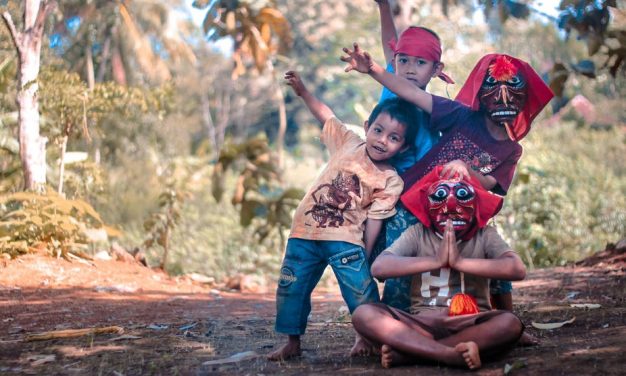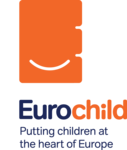
How to meaningfully involve children in research?
Various issues involving children — learning and development, violence against children, and child labour to name a few — are increasingly discussed in public.
There is more awareness of the importance of ensuring the fulfilment of children’s rights. In line with that, there is also more interest in gaining understanding of children’s lives and conditions through research.
In general, research that explores children’s lives is carried out through dialogue with adults — parents, guardians, teachers, doctors, and so on. They act as proxies for the children who are the focus of the research. However, representatives are not always able to accurately articulate the thoughts and experiences of these children, write Clara Siagian, PUSKAPA; Marsha Habib, PUSKAPA, and Santi Kusumaningrum, PUSKAPA.
This article is published through collaboration between PUSKAPA and The Conversation Indonesia, and is the first in a series of two articles on ethics, opportunities and challenges in involving children in research.
There is increasing discourse on the importance of listening directly to children to capture their experiences and perspectives in research. However, the participation of children in research does not necessarily make research more meaningful if it lacks the appropriate methodological planning and ethical preparation.
The aim is to carry out research that actively involves children, so they are not only positioned as the object of research. This approach is called “child participatory research”.
Significant participation of children is necessary because their needs and potentials will be adequately met if adults listen to their voices and experiences and understand their position.
Model of children’s participation in research
In this kind of study, children participate directly without intermediaries. They are not just respondents who must conform to the norms of traditionally adult-oriented research.
A more collaborative and democratic approach, which allows children to take a role in determining the course of research, can ensure significant participation of children.
Such research requires commitment from researchers to understand the experiences and perspectives of children. They must recognise these experiences and perspectives as equal to or as valuable as those of adults.
In addition, researchers should design their research methodology and agenda according to the characteristics and needs of children and carry them out ethically.
There are three models of children’s direct involvement in research: as consultants, as collaborators, and as the research owners or lead researchers. Researchers need to decide early on which type of direct involvement they would like to pursue with children.
Children can act as consultants for the research and provide their recommendations to help researchers make important decisions. While assistance from children can be requested at various stages of the research process, it can be especially important at the development stage.
In cases where children act as collaborators (including as active participants), they may provide directions at one, several or all stages of the research together with the adult researchers. Furthermore, they may take part in shaping the research design, selecting methods, collecting and analysing data, or even in writing and disseminating reports.
However, as the owner or lead researchers, children and their peers are in charge of leading all stages of the research with support from adult researchers.
Designing appropriate and ethical research methods
For children to contribute meaningfully to research, they must feel comfortable expressing their views. Methodologies and methods must be adapted according to the needs and characteristics of the child participants.
That being said, children’s participation must be realised ethically and responsibly without compromising the intellectual rigour of the research.
Seven main principles of ethical research with children are:
- respect
- non-maleficence (“do no harm”) and beneficence (“do good”)
- justice
- best interests of the child
- voluntariness
- confidentiality (including privacy and anonymity)
- the right to be heard and properly researched.
In regards to confidentiality, privacy and anonymity, the researcher must be very clear in explaining who will have access to information shared during the research project. They must also explain, as part of the consent, what will happen to the data when the research is complete.
Most studies that involve children as their informants apply dual consent. That means researchers seek informed consent from both the children and their parents, caregivers or guardians. A child can participate only if both the child and their parent or guardian have consented to being involved in the study.
Non-maleficence is a principle that obligates researchers to take all reasonable measures to minimise potential negative consequences of research for participants and their communities.
Research and researchers might expose child participants and their communities to harm in a number of ways. It is important to understand that harms come in different forms, including psychological, socio-cultural, economic and legal-political harms.
Why should children participate meaningfully in research?
The need for meaningful child participation in research stems from the understanding that, while parents and caregivers can serve as valuable interlocutors for children, they are not capable of fully representing them.
Children are the experts on their lives. There are no better people to truly represent their voices than themselves.
Involving children in research is also an embodiment of children’s right to express their views freely as stated in the Convention on the Rights of the Child (CRC). Children also have the right to be heard and for their views to influence matters that concern them or other children, including research on children.
Children’s meaningful participation promises some benefits.
First, the data and findings can better reflect children’s life experiences and perspectives.
Through these findings child participatory research is expected to support better planning and implementation of programs for children and their communities.
Other potential practical benefits of active child participation include creating new friendships, and developing new skills and potential for the children.
Participatory research can also offer a learning environment for children. When children are actively involved as research partners, they learn certain skills that can be useful later in their lives.
In action-oriented research, the active participation of children not only has the potential to create positive changes in certain areas but can also produce evidence that children have the capacity to participate in public life. In this way, it opens up more space for public participation.
Potential risks when involving children in research
Research involving children carries a number of risks, especially when exploring sensitive topics such as violence, reproductive health, criminal activity, or underage labor.
Children may be more vulnerable and face greater and different risks from adults due to their characteristics or social status.
A study might reveal any number of protection violations, whether among participants or individuals associated with them, including violence, abuse, labour and sexual exploitation, and neglect.
Risks can also emerge from the range of questions being asked. A good rule of thumb is to start with general questions and proceed to more sensitive questions only after trust is earned, rapport is built, and privacy is ensured.
It is imperative for researchers to identify what sorts of risks can occur and impact children as a result of participating in the study.
IRBs (institutional review boards) can be useful for a study team to help identify potential risks, threats and ethical dilemmas. In addition to IRBs, an external group that consists of people from various walks of life and diverse expertise, including researchers experienced in the topic and geography being studied, can help to identify multidimensional risks, threats and dilemmas that researchers sometimes forget or overlook.
Methods to mitigate risks arising from data collection can be embedded in the research tools or techniques. For example, this might involve changing the way a question is asked, or finding a safe place to interact with the children.
At all times, referral plans should be clear and agreed. It is crucial that all protocols for studies involving child participants should include detailed plans for preventing and mitigating safety concerns.
A good exercise is to predict and identify the methodological and ethical dilemmas that may emerge during data collection. Researchers should also prepare a contact list for all relevant services.
“Handbook for Children’s Participation in Research in Indonesia” is produced by PUSKAPA, supported by UNICEF Indonesia and CPC Learning Network at Columbia University. Download it here.![]()
Clara Siagian, Senior Researcher, PUSKAPA; Marsha Habib, Communication and Relations Manager, PUSKAPA, and Santi Kusumaningrum, Director, PUSKAPA
This article is republished from The Conversation under a Creative Commons license. Read the original article.




